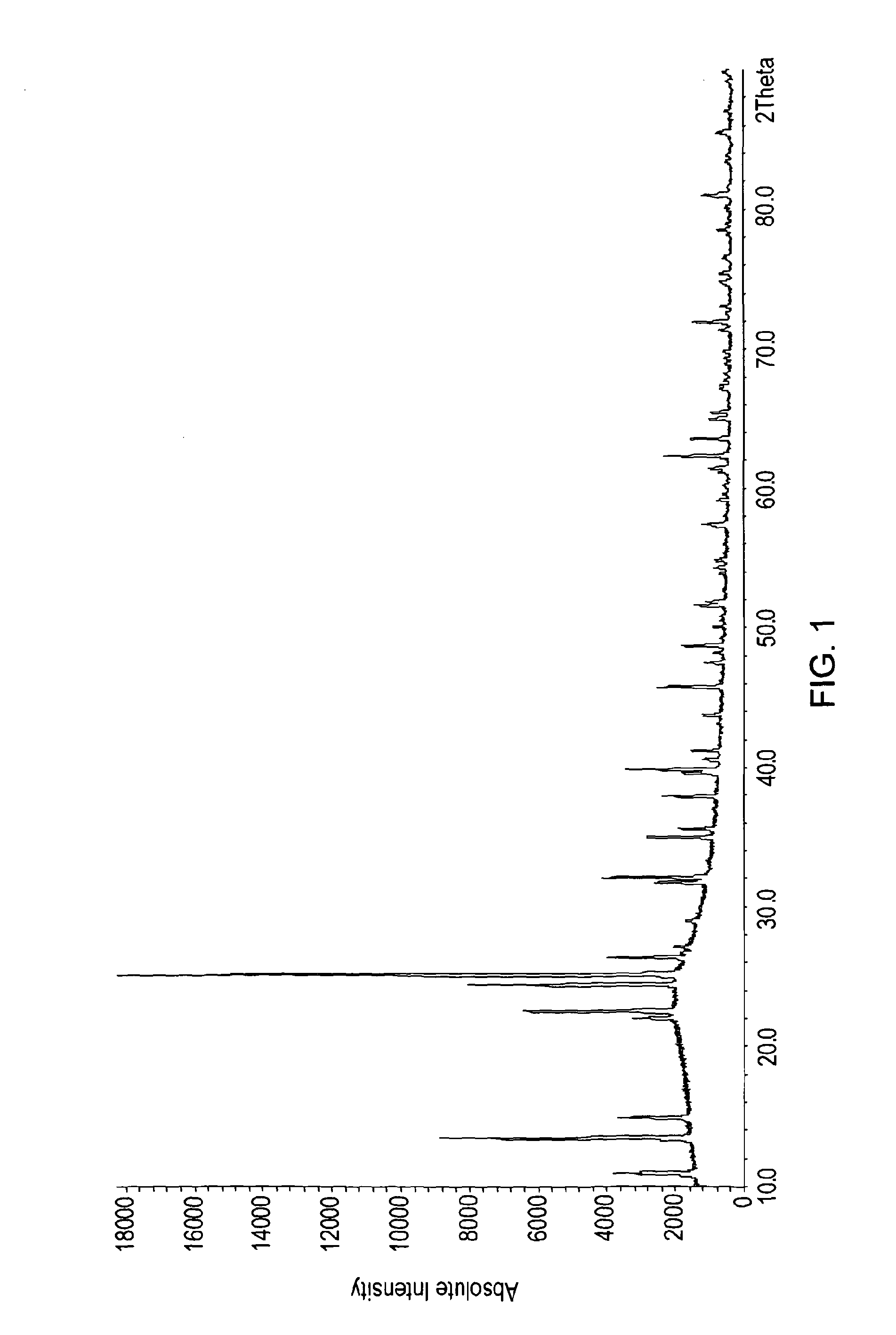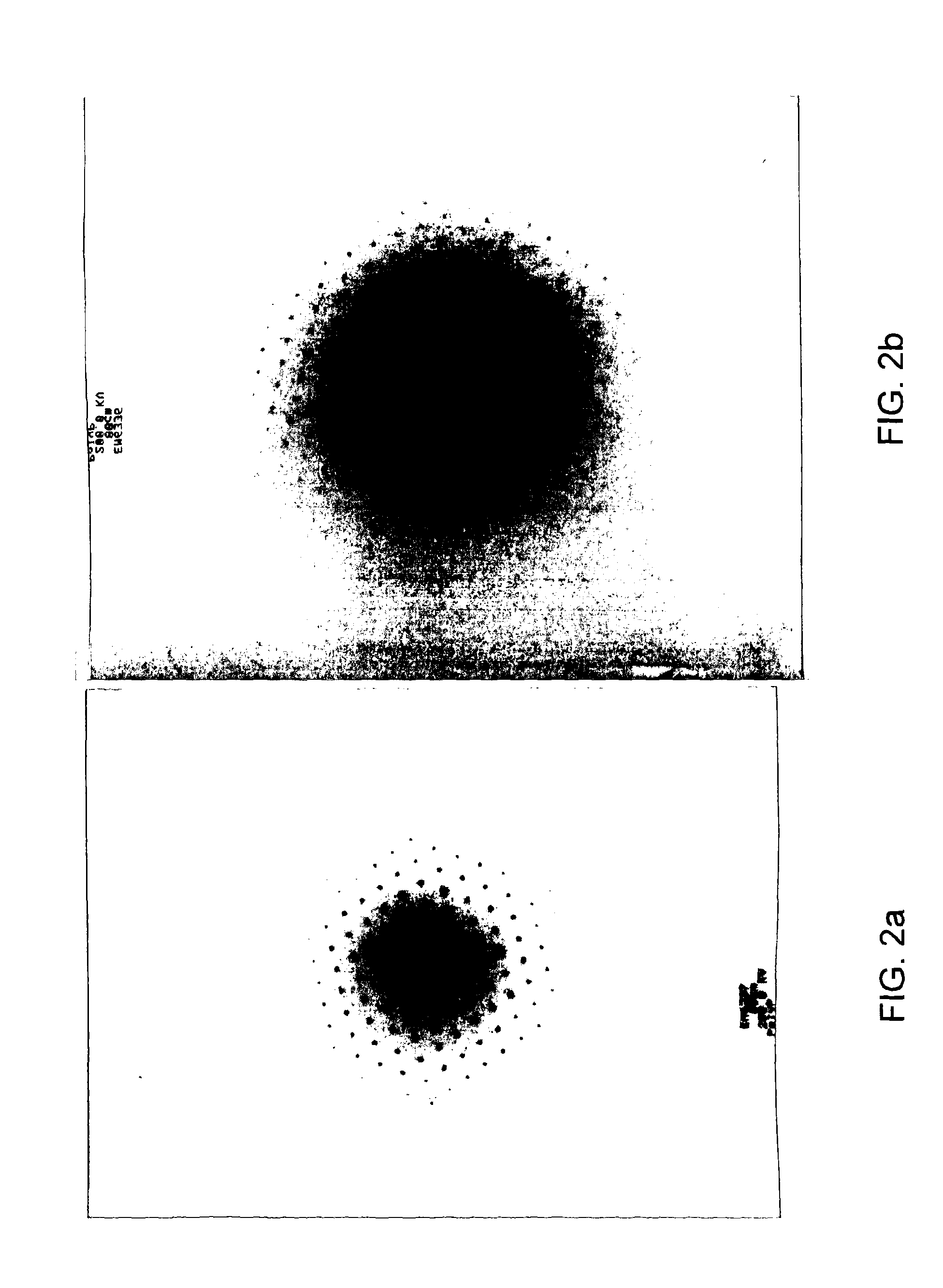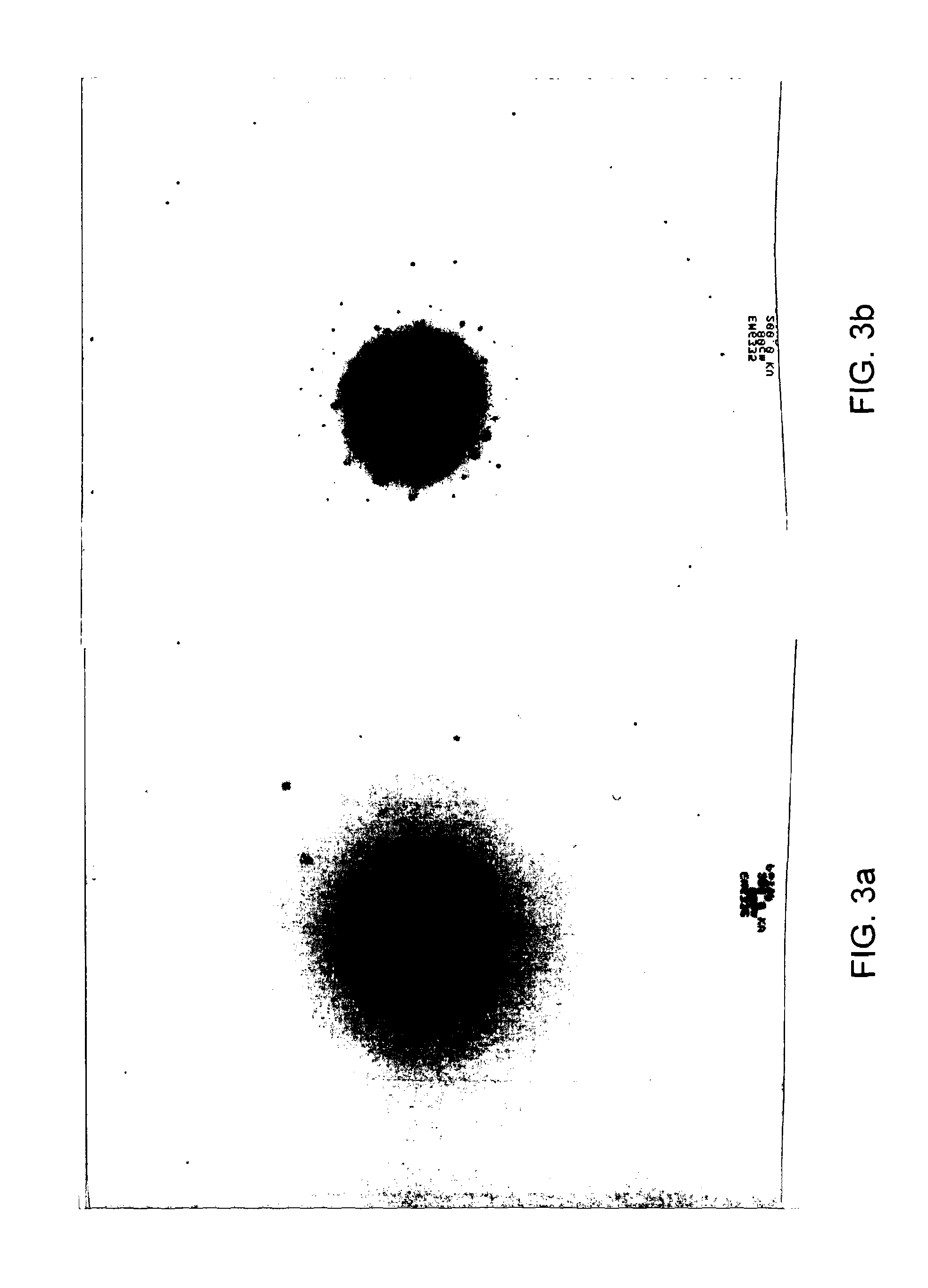Silicon phosphate and membrane comprising the same
- Summary
- Abstract
- Description
- Claims
- Application Information
AI Technical Summary
Benefits of technology
Problems solved by technology
Method used
Image
Examples
synthetic example 1
[0123]It was found that a phosphorus silicon oxide comprising Si5P6O25 and variants thereof could be formed simply by heating pyrophosphoric acid to between 230° C. and 250° C. for around 48 hours in a glass (Pyrex) vessel in a Dean Stark apparatus. Hydrogen peroxide was present and a catalytic amounts of ammonia (or sulfuric acid). SiO2 was leached directly from the glassware. Cooling and washing the resultant material (with methanol) to remove remaining catalyst affords silicon pyrophosphate materials of this family. This method is less preferred than synthetic Example 2 since it gives little control over the silicon content and clearly damages the reaction vessel. It does however serve to illustrate how easily phosphorus silicon oxide, and, in particular Si5P6O25 can be made. A number of other variant methods also proved successful
synthetic example 2
Solid State Method
[0124]Very fine SiO2 powder (fumed silica) was dried for at least one hour at 800° C. to remove water and other absorbed gases prior to usage.
[0125]SiO2 and H4P2O7 were weighed in the relevant stoichiometric amounts (as per Table 1 below).
[0126]Ethanol was added to the SiO2 powder to prevent the loss of the very fine solid particles during mixing. A few drops of hydrochloric acid were added to the silica / ethanol to achieve partial hydrolysis of the mixture. The resulting mixture becomes a slurry on mixing.
[0127]Adding the pyrophosphoric acid and further mixing results in a gel-like slurry. Firing this gel-like slurry to 400° C. will then yield the Si5P6O25 and variant materials.
[0128]It is advantageous / convenient to introduce a lower temperature pre-firing stage to dry the gel-like slurry somewhat before final firing—the pyrophosphoric acid containing slurry / gel is highly corrosive. One should avoid its sudden exposure to high temperatures that may cause it to bubb...
PUM
| Property | Measurement | Unit |
|---|---|---|
| Temperature | aaaaa | aaaaa |
| Time | aaaaa | aaaaa |
| Humidity | aaaaa | aaaaa |
Abstract
Description
Claims
Application Information
 Login to View More
Login to View More - R&D Engineer
- R&D Manager
- IP Professional
- Industry Leading Data Capabilities
- Powerful AI technology
- Patent DNA Extraction
Browse by: Latest US Patents, China's latest patents, Technical Efficacy Thesaurus, Application Domain, Technology Topic, Popular Technical Reports.
© 2024 PatSnap. All rights reserved.Legal|Privacy policy|Modern Slavery Act Transparency Statement|Sitemap|About US| Contact US: help@patsnap.com










